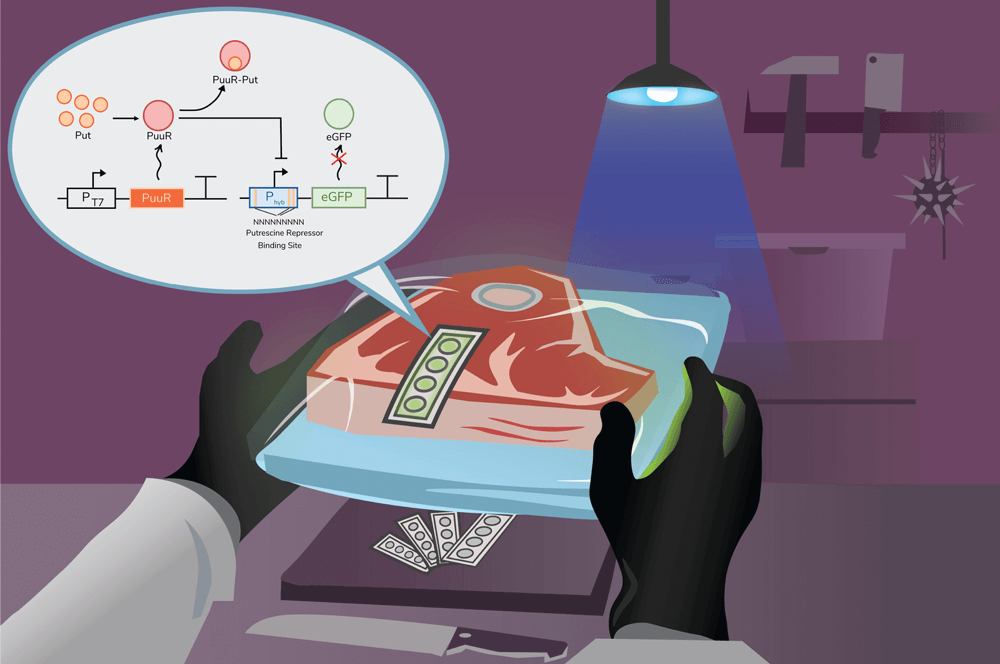Consuming high concentrations of putrescine – a biogenic amine (BA) responsible for the foul odor of expired meat – is associated with heart palpitations and increased colorectal carcinoma risk. Many BAs do not emit a foul odor, and often go undetected. And with no regulations concerning safe putrescine limits in food, we appear to have a meaty problem…
Now, a group of researchers from Concordia University, Montreal, Canada, have presented one possible solution – a paper-based synthetic biosensor (1).
“It was serendipitous, really,” says Steve Shih, co-author of the paper, reflecting on the fact that the idea for the research was sparked by a random conversation about cooking dinner. “My former Masters student, Alaa Selim and I searched the literature for methods of detecting spoiled meats and were surprised to find that there was nothing rapid and inexpensive available – for use at home or in the food industry.”
The paper-device developed by Shih and his team contains a synthetic genetic circuit that – after around four hours – turns a certain color when putrescine is detected. The intensity of the color also quantifies the amount of putrescine present in the sample. The biosensor relies on cell-free protein synthesis – which produces protein without the biological machinery of a cell. The repressor protein PuuR, which is found in Escherichia coli, was then used to assist in the identification of putrescine.
The biosensor technology was applied to pieces of beef kept under different storage conditions; the samples in the freezer and refrigerator contained low levels of putrescine, while the samples left at room temperature accumulated high levels – showing the biosensor’s utility as an index for determining meat product stability. The samples were then pelleted and quantified by HPLC-MS for comparison. And although the values measured were different, due to the conversion of other biogenic amines or compounds to putrescine picked up by the sensor, they were somewhat correlated – validating the results.
“There were many challenges with this project, but the challenging ones are the most exciting,” says Shih. “Optimizing a cell-free system specifically suited for our biosensor required a lot of iterative design and testing.”
The team believes they’ve laid the foundation for many different types of cell-free biosensors that can be used in different fields. “For example, our lab is currently working on a cell-free paper biosensor as a diagnostic tool for infectious diseases and viruses in preparation for the next pandemic,” says Shih.

References
- A.S Selim et al., ACS Appl Bio Mater, 21, 5487 (2022). DOI: 10.1021/acsabm.2c00824



